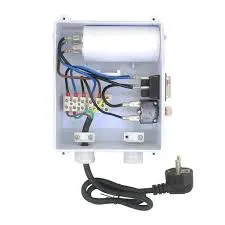Types of Intumescent Strips A Comprehensive Overview
Intumescent strips are vital components in fire safety, designed to enhance the performance of fire-resistant doors and prevent the spread of smoke and flames during a fire. These strips are typically made from materials that expand when exposed to high temperatures, thereby sealing gaps and creating a barrier against fire and smoke. This article explores the various types of intumescent strips available on the market, their applications, and their importance in building safety.
1. Basic Intumescent Strips
Basic intumescent strips are the foundational type used in many fire-resistive assemblies. They are often installed in the frame of doors to expand when exposed to heat. The expansion creates a seal between the door and the frame, preventing smoke and flames from penetrating through the gaps. These strips are typically made from a variety of materials including graphite, ammonium polyphosphate, and other reactants that enable them to swell in the presence of fire.
2. Self-Adhesive Intumescent Strips
Self-adhesive intumescent strips are designed for ease of installation. They come with an adhesive backing that allows for quick and secure application to the door or frame without the need for additional fasteners. These strips are particularly useful in retrofitting existing doors. The performance remains consistent with standard intumescent strips, providing effective sealing properties in the event of a fire.
3. Intumescent Strips with Acoustic Properties
In addition to fire resistance, some intumescent strips are designed to also provide acoustic insulation. These strips are particularly beneficial in environments such as hotels, offices, and residential buildings where noise reduction is desired. The materials used in these strips not only swell when heated but also help dampen sound transmission, providing a dual function of fire protection and noise reduction.
types of intumescent strips

4. Intumescent Strips for Specific Applications
Certain environments and situations require specialized intumescent strips. For instance, intumescent strips designed for use in high-traffic doors must withstand significant wear and tear while maintaining their fire-stopping capabilities. Additional performance features, such as enhanced durability and resistance to environmental factors, make these strips suitable for commercial settings.
5. Finishing Intumescent Strips
Finishing intumescent strips are used for aesthetic purposes, allowing for a seamless look in addition to their functional fire-protection properties. These strips can be painted, stained, or lamination applied to match the existing décor of doors and frames. This type of strip allows architects and interior designers to incorporate fire safety measures without compromising the aesthetic quality of their designs.
6. Frameless Intumescent Strips
Frameless intumescent strips are increasingly gaining popularity, particularly in modern architectural designs where minimalism is key. These strips provide fire protection without the bulk of traditional frames. They are engineered to expand in the event of a fire, effectively sealing gaps in frameless glass doors or other similar applications. This innovative solution caters to both safety and design preferences.
Conclusion
Intumescent strips are an essential aspect of fire safety in building construction, playing a crucial role in protecting lives and property by preventing the spread of fire and smoke. The diversity of types available ensures that there is a suitable solution for a variety of applications, whether for residential, commercial, or specialized environments. Understanding the unique properties and functions of each type of intumescent strip is vital for selecting the right product to meet specific fire safety regulations and architectural requirements. Proper installation and regular maintenance of these strips can significantly enhance the overall fire resilience of a structure, thus contributing to a safer built environment. As advancements continue in materials science and fire safety technology, the effectiveness and adaptability of intumescent strips will only improve, reinforcing their importance in modern architecture.
-
XIANGFAN Rubber Tape-Ultimate Solutions for All Your Insulation NeedsNewsJun.24,2025
-
XIANGFAN Rubber Tape-Protection for Industrial and Residential ApplicationsNewsJun.24,2025
-
XIANGFAN Rubber Tape: Superior Safety and Sealing for Demanding EnvironmentsNewsJun.24,2025
-
XIANGFAN Rubber Tape: Reliable Solutions for Every Electrical ChallengeNewsJun.24,2025
-
XIANGFAN Electrical & Industrial Tape: Powering Reliability Across IndustriesNewsJun.24,2025
-
XIANGFAN Electrical & Industrial Tape: Excellence in Every ApplicationNewsJun.24,2025
